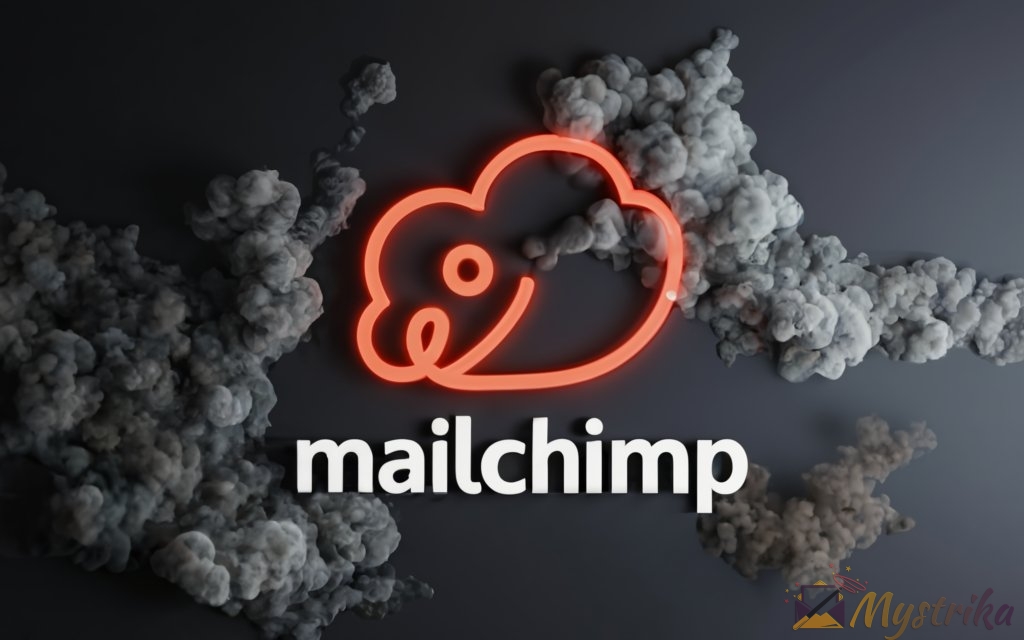As a Mailchimp user, you may have noticed some contacts marked with a “Cleaned” status and wondered what it means. Maintaining proper email hygiene is crucial for deliverability, so understanding cleaned contacts in Mailchimp is key. In this comprehensive guide, we’ll explain everything about Mailchimp’s cleaning process – from the definition of a cleaned contact to automation tools for simplifying list cleaning. With the right hygiene strategy, you can keep your subscriber list clean and campaign-ready. Let’s get started!
What Does “Cleaned” Mean in Mailchimp?
If you’ve been using Mailchimp for your email marketing and notice some contacts have a “cleaned” status, you may be wondering what it means. In short, cleaned refers to email addresses that have been removed from your subscriber list due to issues with deliverability.
Specifically, a cleaned contact is an email address that has either hard bounced or repeatedly soft bounced, causing Mailchimp to deactivate it. But what do these terms actually mean? Let’s break it down.
Hard Bounces
A hard bounce occurs when an email sent to a subscriber’s address is permanently rejected by the receiving server. Some common causes are:
- The email address is invalid, misspelled, or simply doesn’t exist. For example, sending to “[email protected]” will likely hard bounce.
- The domain name is made up and not registered. Emails to addresses like [email protected] will hard bounce.
- There are server-side blocks or filters rejecting messages from unknown senders or certain IP addresses.
A single hard bounce is enough for Mailchimp to mark an email address as cleaned. Since the address is considered invalid and all future emails to it will also bounce, Mailchimp removes it from your active subscriber list.
Soft Bounces
A soft bounce is when an email is temporarily rejected for reasons that may be resolved later. Some common soft bounce causes include:
- The recipient’s inbox is full so it can’t receive more messages right now.
- There are temporary issues with the receiving server, network, or DNS configuration.
- The message is too large to be accepted based on the recipient’s filters.
- The receiving server is temporarily congested with too much traffic.
With a soft bounce, Mailchimp will continue trying to resend the email for a few days before cleaning the subscriber’s address. If the address keeps soft bouncing during this time, Mailchimp will eventually mark it as cleaned.
Spam Complaints
Another way subscribers can end up with a cleaned status is if they report your messages as spam repeatedly. If too many complaints accrue from a particular email address, Mailchimp will preemptively clean it to avoid further issues.
So in summary, “cleaned” refers to addresses that have either hard bounced once, soft bounced consistently over time, or received multiple spam complaints. Mailchimp proactively cleans these addresses to maintain your sender reputation and overall deliverability.
Now that you know why contacts get cleaned, let’s go over what it means when an address has this status.
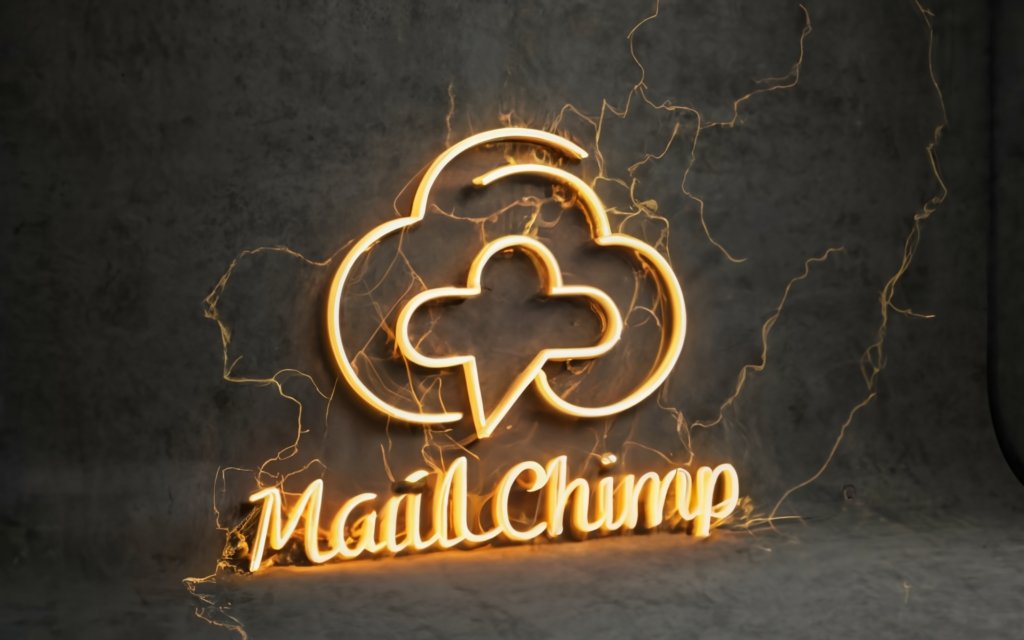
The Impacts of Having Too Many Cleaned Contacts
Now that you know how email addresses become cleaned in Mailchimp, you may be wondering – how many cleaned contacts are too many? Should you be concerned if your list has a lot of them? Let’s discuss how a high cleaned rate can impact your email marketing efforts.
Reduced Deliverability and Damaged Sender Reputation
One of the biggest risks of having many cleaned contacts is reduced email deliverability and a damaged sender reputation.
Mail providers like Gmail use complex algorithms to determine whether an email is spam or not. One factor they look at is the sender’s reputation, which depends partly on their bounce rate.
If over 2-5% of the emails you send hard bounce back, ISPs may begin suspecting your domain of sending spam. This can result in emails automatically going to spam folders or being blocked entirely.
Many cleaned contacts inflated your bounce rate, signaling to ISPs that your emails lack quality and aren’t reaching real inboxes. This damages your domain’s reputation and deliverability.
Lower Open and Engagement Rates
Another impact of excessive cleaned contacts is lower open and engagement rates for your email campaigns.
When you send emails to a list full of defunct, invalid addresses unlikely to open and click, it skews your analytics. Your overall open and click-through rates will decrease compared to if you only emailed truly active subscribers.
Low engagement metrics also look suspicious to ISPs, potentially compounding any deliverability issues. It’s a sign that your emails lack relevance to recipients.
Wasted Resources and Diminished ROI
From a business standpoint, cleaned contacts waste time and resources spent emailing addresses that no longer work.
Creating email campaigns, sending messages, and analyzing stats takes effort. But if you’re spending that time emailing fake or invalid addresses, it’s wasted energy that provides no ROI.
Emailing engaged subscribers has a return through purchases, conversions, etc. Emailing cleaned contacts does not. It diminishes the overall ROI of your email marketing activities.
How Many Cleaned Contacts Are Too Many?
So when should you start worrying about reaching too many cleaned contacts? Industry experts recommend keeping your overall hard bounce rate under 2%.
As a rule of thumb:
- Less than 5% cleaned contacts is a healthy, normal range.
- Between 5-10% cleaned contacts indicates your list may need attention. Review your hygiene practices.
- More than 10-15% cleaned contacts is a red flag. Deliverability and engagement likely suffering. Time for an intensive list cleanse.
Of course, these thresholds aren’t absolute. The ideal number can vary based on your industry, list size, email frequency, and other factors.
Regularly review your audience stats and watch for any upward trends in cleaned rates, spikes after an import, or sudden deliverability declines. These are signs it may be time to freshen up your list.
Now let’s go over how Mailchimp actually handles cleaned contacts and what options you have for managing them.
How Contacts Get Cleaned in Mailchimp
Now that you understand the implications of having too many cleaned contacts, let’s look at how Mailchimp actually goes about cleaning lists and the key differences between cleaned and unsubscribed statuses.
Hard vs Soft Bounces
As mentioned earlier, the main triggers for getting cleaned are hard bounces and repeated soft bounces over time. But what’s the difference between these two types of bounces?
A hard bounce occurs when the receiving email server permanently rejects the message. This results in an NDR (non-delivery receipt) error arriving in the sender’s inbox stating the email is undeliverable.
Some common hard bounce causes include:
- Typos – Misspelled email addresses like [email protected] will hard bounce.
- Invalid domains – Made up domains that don’t resolve to a real website will hard bounce every time.
- Server-side blocks – Some receiving servers completely block unknown IP addresses or senders.
With a hard bounce, Mailchimp has confirmation the address is invalid. So a single hard bounce will trigger cleaning the subscriber’s email address.
Soft bounces are different in that they fail delivery temporarily rather than permanently. Some common causes include:
- Full inboxes – If the recipient’s inbox is full, emails to them will soft bounce until space frees up.
- Large attachments – Messages with attachments over the recipient server’s limit will soft bounce.
- Temporary issues – Problems with the recipient’s server, network, or filters that eventually resolve.
- Traffic congestion – If the receiving server is overloaded, messages may soft bounce until traffic clears.
Since the factors causing a soft bounce are temporary, Mailchimp will continue periodically retrying delivery for several days before cleaning the address. But if the soft bounces persist beyond the retry period, cleaning will eventually occur.
Spam Complaints Process
Contacts can also end up with cleaned status if they file spam complaints against your emails. Here is how the complaint process works:
- Recipient clicks “Mark as Spam” on an email from your address.
- Their email provider sends a spam report to Mailchimp.
- Too many complaints about an address trigger cleaning by Mailchimp.
The threshold for cleaning due to complaints depends on your overall sending volume and reputation. Mailchimp is more tolerant of occasional complaints for larger, established senders versus brand new accounts.
But in general, regularly getting flagged for spam is a red flag indicating subscribers don’t find your messages useful or relevant. Mailchimp will clean complainers to protect your deliverability.
Unsubscribes vs. Cleaned Status
It’s important to understand the difference between cleaned contacts and those who have unsubscribed from your emails.
An unsubscribe occurs when a recipient specifically clicks the unsubscribe link at the bottom of your emails indicating they no longer wish to receive any messages.
In contrast, cleaned status results from technical factors like bounces or complaints out of the subscriber’s direct control.
Here are some key differences:
- Unsubscribes still have technically valid, working email addresses. Cleaned addresses are non-functional and unreachable.
- Unsubscribes can be exported or re-added by resubscribing. Cleaned addresses must be re-entered from scratch.
- Unsubscribes actively choose not to get your emails. Those getting cleaned likely never saw an email from you.
So in summary, cleaned contacts bounce or get flagged as spam while unsubscribes deliberately opt-out. Be sure not to confuse cleaned subscribers with those choosing to unsubscribe.
Now let’s go over some ways to view and manage cleaned contacts within Mailchimp.
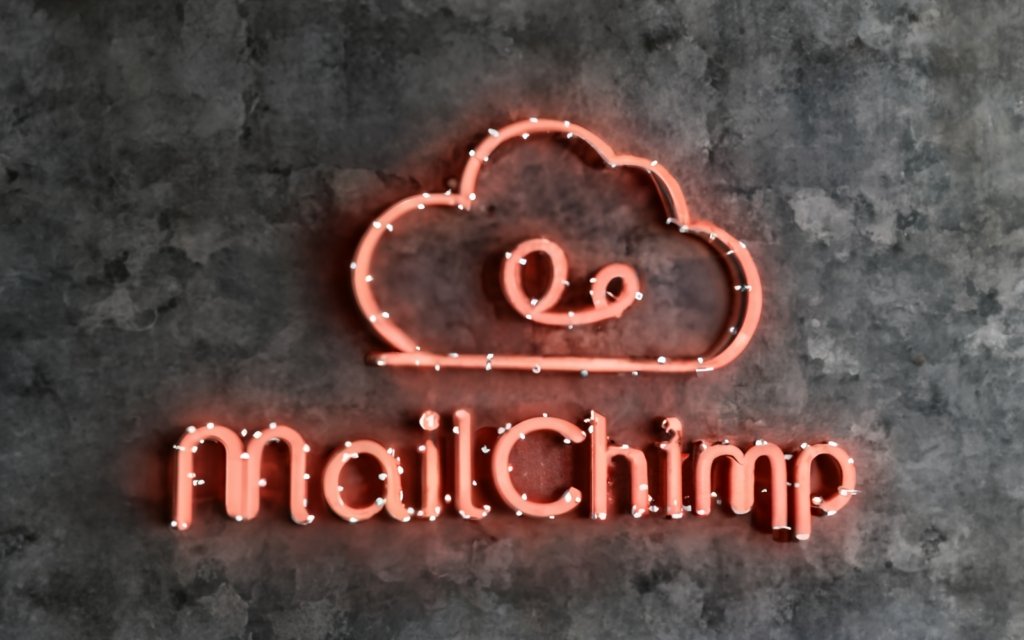
Where to View and Export Cleaned Contacts
In Mailchimp, cleaned contacts remain visible in your audience list but are labeled with a “Cleaned” status and have send privileges revoked. To view or export your cleaned contacts, you’ll need to use Mailchimp’s filtering tools.
Using Mailchimp’s Segmenting Tool
Mailchimp allows you to create targeted segments of your audience based on various conditions and criteria. We can use this to isolate cleaned contacts.
Here are the steps:
- In your Mailchimp account, click the “Audience” tab.
- Choose the audience you want to view cleaned contacts for.
- Click the “Contacts” sub-tab to see your contact list.
- Above the list, click the “Filter” drop-down and choose “Create New Segment”.
- Name your segment something like “Cleaned Contacts” for easy reference.
- In the first filter drop-down, choose “Email Marketing Status.
- For the condition, select “Is”.
- In the third field, choose “Cleaned”.
- Click “Preview Segment” to view contacts matching this cleaned filter.
This will display a list of all your cleaned contacts for that audience. You can also click the “Export Segment” button to download a CSV file containing the cleaned data for analysis and records.
Downloading a Cleaned Contact List CSV
If you don’t want to create a saved segment, you can also export cleaned contacts directly from the “Contacts” page.
Here are the steps:
- Go to the “Audience” then “Contacts” page in Mailchimp.
- Choose your desired audience from the drop-down menu.
- Click the “Export” button above the subscriber list.
- In the pop-up window, select “Comma separated values (.csv)” for the file type.
- Check the box labeled “Export only filtered contacts”.
- In the filter drop-down that appears, choose “Email Marketing Status.
- Set the condition to “Is” and the third field to “Cleaned”.
- Select “Export” and Mailchimp will email your cleaned contact CSV file when complete.
This exports your cleaned contacts without saving a segment. The process works the same for any filter condition you choose.
With a bit of filtering, you can view cleaned subscribers for analysis, records, or deletion if desired. Next let’s go over how to fix common cleaned causes like typos.
Best Practices to Prevent Cleaned Contacts
Now that you know the implications of excessive cleaned contacts, let’s discuss some proven strategies to keep your list clean and avoid unwanted bounces and spam complaints.
Double Opt-In
Require new subscribers to confirm their signups via double opt-in (DOI) to ensure valid, willing addresses get added to your list. Here’s how double opt-in works:
- Visitor signs up by submitting their email address on your website opt-in form.
- They receive an automated email asking them to confirm the signup.
- Clicking a link in the confirmation email adds them to your subscriber list.
This prevents fake or mistyped email addresses from entering your list since the subscriber must demonstrate having access to their inbox.
Send Valuable Content
Always provide targeted, relevant value to your subscribers via your email campaigns. Useful content reduces the risk of recipients marking your emails as spam or ignoring them altogether.
Ensure you have consent to send commercial messages as needed by law. Clearly explain the types of emails subscribers can expect to receive upon opting in.
Segment your list based on preferences and interests, then tailor content appropriately. Avoid generic “batch and blast” emailing.
Use Recognizable Sender Details
Configure your “From” name, email address, and subject lines to be identifiable and consistent. This helps subscribers recognize your emails as wanted mail vs spam.
Avoid using generic names like “Admin” or no-reply addresses. Include your brand name, use the same sending address each time, and ensure subject lines sound like they come from you.
Implement Email Authentication
Properly authenticate your sending domain using methods like SPF, DKIM, and DMARC. This helps prove your legitimacy as a sender and avoid landing in spam folders.
Work with your email services provider to fully implement email authentication protocols. When done correctly, authentication “aligns” your IP addresses, domain, and sending infrastructure.
Ask for Feedback
Actively survey your subscribers asking for feedback on your emails. Gauge their interests, ask how you can improve relevancy, and invite suggestions for future content.
Use this feedback to fine-tune your segments, content strategy, email types, and schedule. The more tailored your program is to subscribers’ needs, the fewer complaints and bounces you’ll incur.
Fixing Subscriber Email Typos and Errors
One common cleaned cause is simple typos in originally submitted email addresses. Mailchimp won’t let you directly edit the cleaned address, but you can add a corrected version manually.
Here’s how to re-add a cleaned contact with fixed typo:
- Go to your audience page in Mailchimp.
- Click “Add a Subscriber”.
- Manually type the name and corrected email address.
- Check the box to confirm having permission.
- Click “Subscribe”.
This will re-subscribe the contact under the proper email. Be sure to pay close attention to any typos when reviewing cleaned contacts after import or signups.
By taking measures to keep your list clean and monitored, you can avoid unwanted bounces and complaints leading to cleaned subscribers.
Now let’s explore how automating tools can simplify Mailchimp list management at scale.
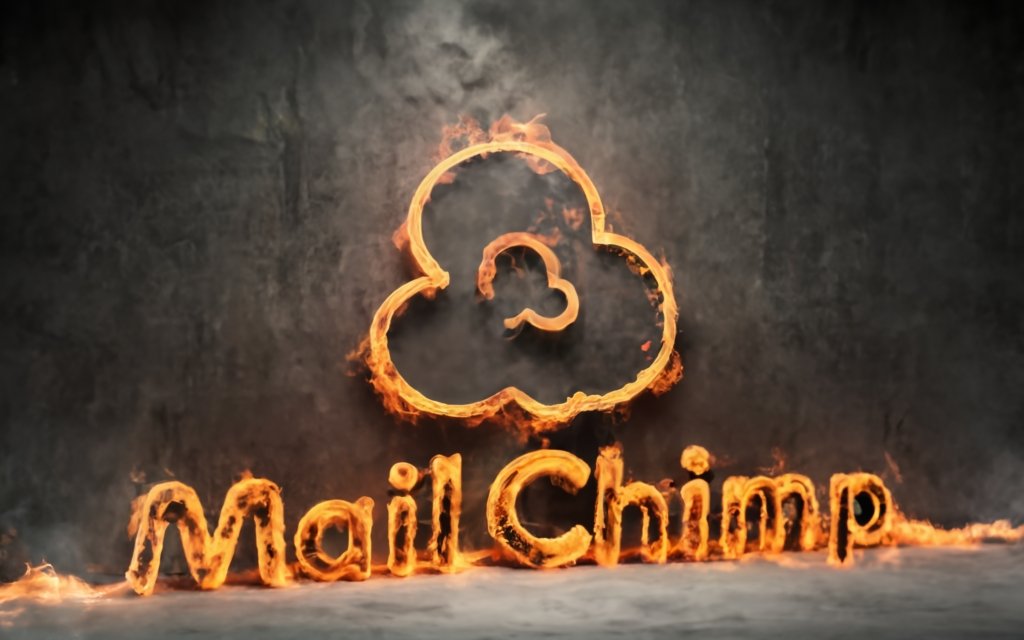
Automating Mailchimp List Cleaning and Hygiene
Manually cleaning your Mailchimp list takes significant time and effort. Fortunately, there are tools available to automate list hygiene tasks like finding duplicates, fixing data inconsistencies, and removing unengaged contacts.
App Integrations Like IFTTT
IFTTT (If This Then That) is an automation platform that connects various apps and devices via “recipes”. IFTTT can automate repetitive Mailchimp list cleaning tasks.
Some examples include:
- Automatically unsubscribing hard bounces detected in a Gmail folder.
- Deleting contacts who haven’t opened in 6 months based on a Google Sheet CRM.
- Updating subscriber tags in Mailchimp when marked as VIP in a project management tool.
- Adding new signups from a Google Form to a Mailchimp audience instantly.
The key is that IFTTT can automatically take action in Mailchimp based on triggers from other apps. This removes the manual effort of cleaning your list.
Merging Duplicates Across Audiences
Mailchimp treats each audience in your account separately when it comes to duplicate checking. But often you need to de-dupe and merge contacts across multiple audiences.
Tools like Insycle can find duplicates between audiences using criteria beyond just email, like names, company, address, and more.
Insycle then allows you to merge duplicate records across any audience into a single profile. This consolidates scattered subscriber data into one clean record.
Standardizing Contact Data Format
In a manually collected list, contact data like names, companies, addresses, and phone numbers end up in all sorts of formats. This makes segmentation and personalization difficult.
List cleaning solutions can identify inconsistencies and standardize data to a uniform format. For example:
- Converting state abbreviations to full names
- Removing special characters from phone numbers
- Formatting zip codes with leading zeros
Automated standardization saves having to manually edit or clean up inconsistent contact data down the road.
Removing Low Quality and Unengaged Contacts
Over time, some subscribers will go inactive and no longer open or click on campaigns. Keeping them on your list inflates costs and stats.
List cleaning tools allow you to filter out contacts who haven’t engaged in the last X months. This removes irrelevant contacts automatically based on activity metrics.
You can also filter by criteria indicative of low quality, such as:
- Signed up with generic email domains (@yahoo.com, @gmail.com, etc)
- Missing key contact fields like first name or company
- No purchases or conversions tracked
Key Features for Automated Data Cleaning
When evaluating list cleaning and CRM automation software, look for these key capabilities:
- Contact record merging – Easily combine duplicate records across audiences into a single profile.
- Bulk find/replace editing – Fix typos and inconsistencies across thousands of records in one click.
- Data standardization – Automatically format contact data like names, addresses, and phone numbers.
- Scheduled workflows – Set up recurring data quality workflows like de-duping on a timeline.
- Change previews – Review pending updates before altering live CRM data.
- Segmentation – Isolate subsets of contacts based on complex filters and criteria.
- Workflow triggers – Initiate cleaning when certain conditions are met, like list import.
The right automation tools can simplify managing Mailchimp contact data and list hygiene at any scale. Next let’s discuss maintaining the ideal state of cleanliness.
Maintaining the Ideal Balance of List Hygiene
As discussed earlier, having some cleaned contacts is normal but excessive cleaning indicates issues. So what’s the right balance for a healthy list?
Keeping Subscriber List Clean but Not Too Small
You want your Mailchimp list to be clean enough for good deliverability but large enough to achieve your goals.
Industry experts recommend:
- No more than 2-5% hard bounces
- At least 50-100 engaged subscribers (active opens and clicks)
Finding the right balance depends on your business. Monitor engagement metrics, conversion rates, and growth trends. Ensure you’re keeping the CRM clean without being too aggressive.
Monitoring Engagement and Open Rates
Watch for sudden changes in open and click-through rates after sends. Low engagement combined with an uptick in cleans may signal your content needs rework.
Review email copy, segment targeting, schedules, contact details, and other factors if you notice a sustained drop. Get feedback from subscribers as well.
Signs It’s Time to Clean Your Mailchimp List
Here are a few red flags indicating your Mailchimp contacts need an intensive cleanse:
Increased Bounces or Spam Complaints
If bounces suddenly spike, first check for import issues or a technical problem. If nothing obvious caused it, you likely have mounting dirty addresses.
Too many spam complaints also suggest relevance issues. Try segmenting differently and adjusting content to resonate better.
Lower Open and Click Rates
As touched on earlier, low open and click rates indicate your emails aren’t engaging subscribers. Time to freshen your list by pruning inactive contacts.
Budget Wasted on Unengaged Contacts
Calculate the cost incurred emailing contacts who haven’t opened in 6+ months. This wasted budget signals that cleaning is needed.
Segment your list by activity metrics and engagement to focus on quality subscribers only. Remove defined segments of chronically inactive contacts.
Maintaining the optimal state of hygiene is an ongoing balancing act. Continuously monitor your Mailchimp account analytics for signs it’s time to clean your list again.
Next let’s explore how professional email list cleaning services can help.
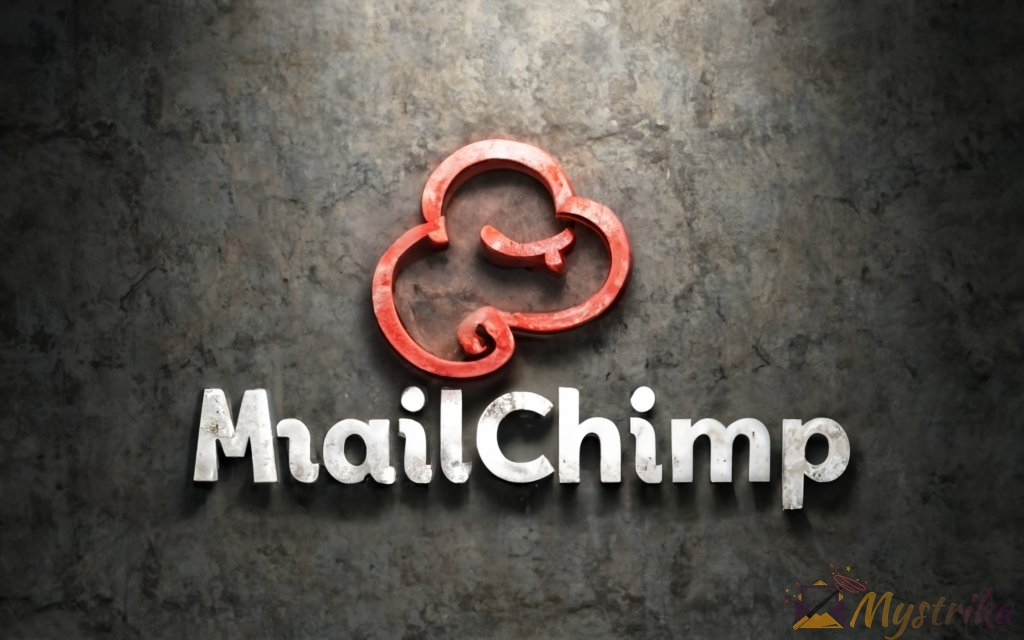
How an Email List Cleaning Service Can Help
Maintaining pristine CRM hygiene and list organization takes much time and effort. For busy marketers or large contact databases, outsourcing the work to a professional service may be more efficient.
Mystrika – A Mailchimp List Cleaning Service
Mystrika by Sugar-coated Marketing is an advanced email list cleaning and hygiene service tailored for Mailchimp users.
They offer expert CRM maintenance combined with automation to keep your subscriber data clean and campaign-ready at all times.
Key features of Mystrika for Mailchimp list cleaning include:
- Identifying and merging duplicate subscriber records across all audiences.
- Standardizing contact details like names, addresses, and phone numbers.
- Automated scheduling for periodic hygiene upkeep like de-duping.
- Adding accurate email engagement tracking pixels to links.
- Appending additional demographic and firmographic data to enrich subscriber profiles.
- Custom campaign performance reporting and analytics.
Main Benefits of Outsourcing List Cleaning
Some top reasons to consider outsourcing Mailchimp list cleaning and maintenance include:
Time Savings – Cleaning dirty data requires significant manual work. Automated services clean in a fraction of the time.
Expert Execution – They use proprietary tools and expertise to fix CRM issues beyond your DIY capabilities.
Ongoing Hygiene – Set up scheduled jobs to keep your audience data cleaned without ongoing work.
Enhanced Data – appended demographic and firmographic details improve segmentation and targeting.
Performance Tracking – engagement tracking provides campaign analysis not available in Mailchimp.
Peace of Mind – confidence that your CRM will stay pristine and optimized for nurturing leads.
When to Consider Using a Service
Here are three signs it may be time to hand off Mailchimp hygiene tasks to a dedicated service:
Large Subscriber List
For databases above 50,000+ contacts, cleaning and de-duping can become extremely tedious without automation. Outsource to maintain quality at scale.
Limited Time for List Cleaning
If your marketing team lacks bandwidth for proper database upkeep, work and expertise is worth outsourcing for optimal emailing.
Need for Automation and Advanced Tools
DIY list cleaning has limitations. Outsourcing provides access to automation and advanced capabilities that in-house efforts can’t match.
In summary, services like Mystrika provide a hassle-free way to keep Mailchimp database cleaned for peak email marketing performance.
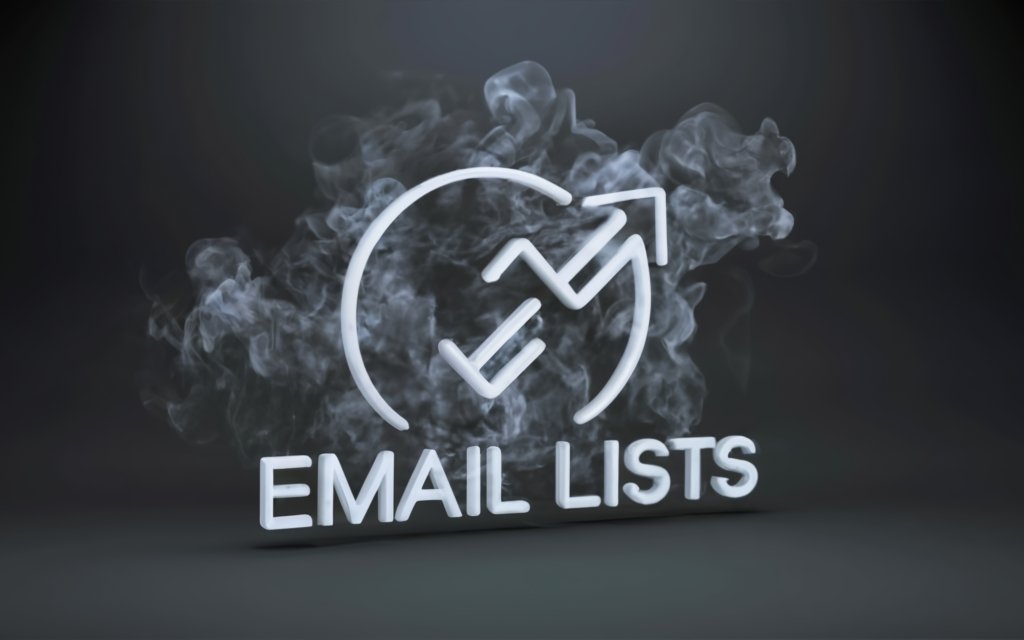
Key Takeaways on Cleaned Contacts in Mailchimp
- “Cleaned” refers to email addresses removed by Mailchimp due to hard bounces, repeated soft bounces, or spam complaints.
- Excessive cleaned contacts damage deliverability and sender reputation, lower engagement, and waste resources emailing defunct addresses.
- Regularly review audience stats and watch for sudden increases in bounce rates or drops in open rates, which signal list cleaning is needed.
- Mailchimp’s segmenting tool allows you to isolate and export cleaned subscribers for analysis or removal.
- Best practices like double opt-in, valuable content, recognizable sender details, and email authentication help avoid cleaning.
- Typos causing cleaning can be fixed by manually re-subscribing the corrected address.
- Automation tools like IFTTT recipes and dedicated services can simplify list cleaning and maintenance at scale.
- The ideal state of hygiene balances keeping some inactive contacts for re-engagement while removing low-quality data.
- Signs it’s time for a deep clean include increased complaints or bounces, lower open rates, and wasted budget on unengaged contacts.
- For large or complex databases, outsourcing list cleaning and hygiene to services like Mystrika can save time while optimizing your audience.
Keeping Mailchimp contacts clean takes work but pays dividends for deliverability, conversion rates, and overall program growth. Use these tips and best practices to monitor list hygiene and keep your subscriber database optimized.
Frequently Asked Questions
Q: Why did some of my contacts get cleaned in Mailchimp?
A: The main reasons are hard bounces, repeated soft bounces, or spam complaints. Mailchimp automatically cleans addresses causing deliverability issues or perceived as spam.
Q: Can I edit or fix a cleaned email address in Mailchimp?
A: No, you cannot directly edit a cleaned address. But you can add the corrected version as a new subscriber which will reactivate it.
Q: What happens when Mailchimp cleans my list?
A: Cleaning revokes send access for those addresses but leaves them visible in your list marked with a “Cleaned” status. Cleaned contacts don’t count toward your list size.
Q: Should I delete my cleaned contacts?
A: We don’t recommend deleting them as they provide record of undeliverable emails. You can archive cleaned contacts if not using them for anything.
Q: How do I prevent my list from getting cleaned?
A: Use double opt-in, send relevant content, configure recognizable sender details, authenticate your domain, and regularly ask subscribers for feedback.
Q: How often should I clean my Mailchimp list?
A: Industry best practice is to fully clean your list at least monthly. More frequent light cleaning may be needed depending on list size and growth rate.
Q: What’s the maximum cleaned rate I should maintain?
A: Experts recommend keeping hard bounce rates under 2-5%. Anything above 10-15% total cleaned contacts signals your list needs attention.
Q: Can I automate cleaning my Mailchimp list?
A: Yes, tools like IFTTT, Zapier, and Insycle allow you to set up automated workflows to de-dupe, standardize, and segment your contacts.
Q: When should I use an email list cleaning service?
A: Outsource cleaning for large lists, if your team lacks time, or if you need advanced capabilities like cross-audience de-duping and custom analytics.

